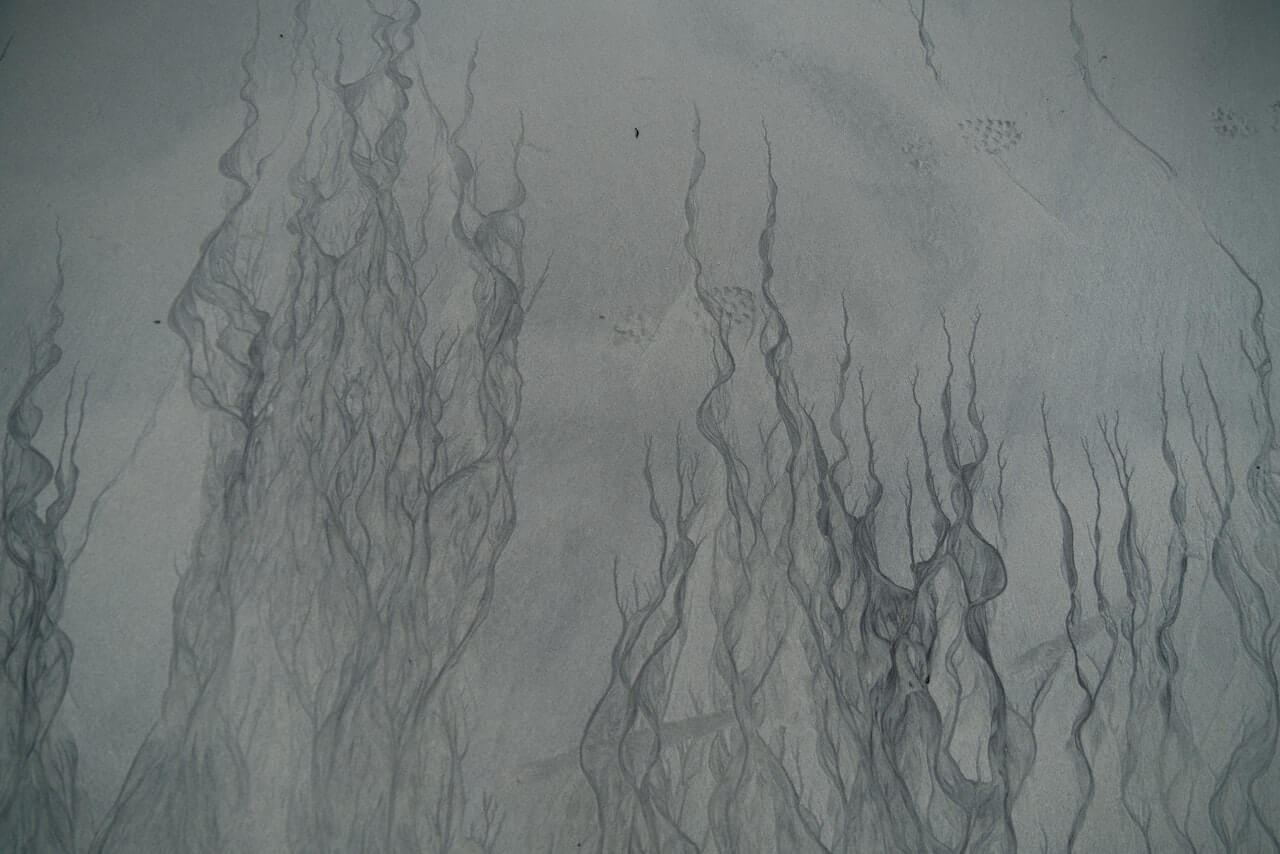Knowing how to get rid of spray paint lines will help you fix the mess you already created and still get a gorgeous finish.
Spraying is the easiest and fastest way to finish a paint project. However, it’s just as easy to mess up and end up with a mistake like a spray paint line. We’ve all been there, done that, and pivoted.
In this article, we’ll guide you on how to get rid of uneven spray paint lines. We’ll also pinpoint its causes and how to prevent it, and ultimately show you how to paint without leaving spray paint lines.
Let’s dive right in
How to get rid of spray paint lines
To get rid of spray paint lines, let it dry and cure and then wet sand the imperfection. Next, clean up the sanded surface using a microfiber cloth dampened with paint thinner. Then, apply primer if you removed the paint to the bare surface. Finally, spray thin coats of paint on the surface.
What is a spray paint line?
A spray paint line is a common spray paint mistake characterized by distinct marks on the painted surfaces. These spray paint lines can either be a light-colored line on a dark-colored surface or a dark line on a light-colored surface.
These spray paint lines are mostly a result of a partially clogged spray tip or nozzle during the painting process. A clogged tip lets out the paint in sputters or blobs instead of a fine mist.
Spraying too close to the surfaces without overlapping the previous coat can also cause spray paint marks.
Other common spray paint mistakes you’re likely to encounter in your painting journey include;
Cracking
Fish eyes
Flaking and peeling
Orange peels
Overspray
Paint blobs
Paint runs and drips
Patchy paint
Shrinking
How to get rid of spray paint lines
Spray paint lines can happen to anyone, pros and amateurs alike. The only difference between these two painters is their ability to remedy mistakes and produce evenly painted projects.

This remedy process may take longer or shorter depending on your experience level. The material of the surface also plays a role, whether it’s plastic, metal, or wood. Follow the steps below to help you get closer to achieving your dream spray paint results.
Step 1: Wait for the spray paint to cure
If the spray paint lines are apparent immediately after laying them on, resist the urge to try and fix them while it’s still wet. If you try fixing the paint too soon, you will create smudges and worsen the damage further.
Allow the coat of paint to dry for as long as the manufacturer recommends. Ideally, this should take about an hour to dry; under optimal and favorable weather conditions.
Also, a light coat of paint will dry faster than a thick one. Ensure the paint is completely dry to make the repair process more manageable.
Step 2: Wet sand the imperfection
Wet sanding paint errors is the most subtle yet effective way to give the surface another chance at flawlessness. It also helps you keep the damage at a minimum possible.
You can approach the wet sanding process using one of two ways:
First, get a water spray bottle to wet the affected surface before sanding. You can spritz some more water when the surface dries up and continue with the sanding process.
The second method is probably the easiest; dip the sandpaper in a bowl of water and use it for sanding the target surface. You can always keep wetting the sandpaper in water when it dries up.
What you need to remember is to keep the sandpaper and the surface wet. That means using the right amount of water, not too much to flood the surface and not too little.
Rub the spray paint line following the direction in which it occurred, vertically or horizontally. Keep sanding until the surface is smooth to the touch and no more stripes left.
Step 3: Clean up the sanded surface
Clean up the messy surface once you’ve evened out the paint lines. Begin by washing off the debris from sandpaper and paint using a damp sponge and soap. Clean up further using a microfiber cloth dampened in mineral spirits or any other suitable paint thinner to remove oil or wax films.
Allow the cleaned surface to dry completely, preferably in a controlled environment. This will ensure that the surface remains in the best condition possible for repainting.
Step 4: Apply primer (optional).
This step is only relevant if you wet-sanded the paint to the bare surface. A primer conditions the surface. As a result, this ensures that the paint will bond to the surface and help you achieve flawless paint coverage.
Follow the instructions manual before and while applying the primer. Shake the primer for about a minute and ensure you stand at least 12 inches from the target surface. Spray the primer back and forth using a steady pace and overlapping the previous coat at 50%.
Once the surface is fully primed, let it dry completely before you begin painting. This will take about 30 minutes to 1 hour, depending on the weather conditions and the material of the surface you’re painting.
Step 5: Apply a fresh coat of paint
Prep the paint and thin it even if you’re using a spray gun. If a clogged nozzle caused the spray paint line, ensure that it’s cleared first to avoid repeating the same mistake.
If you’re using an aerosol spray, shake the paint can for about a minute before you begin painting. Test spray on cardboard to ensure the paint flows in a fine mist.
Start spraying a light coat of paint, maintaining a 12-inch distance between you and the surface. Spraying too close to the surface will quickly lead to paint drips and the error we’re fixing.
Maintain a steady spraying pace and overlap the previous sweep by 50%. This will ensure you have a continuous coat of paint without any stripes.
Step 6: Let it dry completely.
Let the painted surface dry completely for as long as necessary. While the first coat dries, you can start inspecting (eyeballing) your work to check for any paint mistakes.
While the paint dries, clean the spray nozzle in paint thinner to cut down the chances that it causes any imperfection.
Ensure the paint is completely dry before adding on a fresh layer.
Step 7: Apply the subsequent layers of the paint
Reapply another thin coat of spray paint on the first one, following the same procedure. Again, wait for the second coat of paint to dry completely before layering another one.
Ideally, you’ll need 2-3 coats of spray paint for even coverage. However, if your specific surface requires more coats of paint, go for it.
How to spray paint without leaving lines
Knowing how to spray paint without leaving lines is one skill that will take lots of practice to master. It involves a few key steps that make a lot of difference to the painting results. These critical steps narrow down to gun control and the spray painting technique.
Once you master how to use a spray gun and control the pressure settings, your spraying technique will be unmatched. But you need consistent practice. Here’s what you need to look out for.
Proper spray gun setup
This process involves assembling the different parts of the equipment and, most importantly, ensuring the spray nozzle is free of paint and any other contaminant. The same goes for a spray can. Always test for the correct spray pressure, not too high or too slow.
High spraying pressure will form the spray paint lines, while a slow pressure will cause paint drips.
Keep shaking the paint sprayer.
This applies to airless spray guns and aerosol cans. Shake the paint regularly to ensure it flows in a fine mist, not blobs or spurts.
Maintain the correct spraying distance
Maintain a spraying distance of 8-12 inches between you and the surface you’re painting. Standing too close to the substrate will easily form paint drips or tiger stripes while painting a car. Yet, spraying too far from the surface will have the paint atomizing mid-air before landing on the surface, causing uneven paint.
Also, ensure the spray nozzle is always angled at 90 degrees with the surface.
Overlap the previous paint sweep
Overlapping the paint ensures a continuous coat of paint throughout the surface. In simpler words, it’s the only way to avoid the start-and-stop marks on the spray-painted surface.
Spraying paint close to the edge of the previous one without overlapping will form light and dark shadows on the surface. These shadows are distinct lines showing where the heavy paint hits the surface and is connected at the edges by the light overspray.
Bonus tips
Allow sufficient drying time between coats of spray paint. Where possible, have the painted piece dry in a temperature-controlled space. Always keep fine grit sandpaper on hand if you need to knock down any imperfections.
How to prevent the occurrence of spray paint lines
Preventing spray paint lines is easier than the repair process. These simple practices make your paint job look like a pro’s work.
First, always clean or unclog the tip of the aerosol can or spray gun after every spray paint session. Remove and soak it in a cup of paint thinner or mineral spirits to dissolve the paint residue.
If the paint has dried on the nozzle, soak it in paint thinner overnight and then use a toothpick to remove any stubborn stain.
Also, remember to use a steady spraying pressure while maintaining the correct spraying distance. Overlapping the previous layer by half is equally important in preventing the occurrence of spray paint lines.
FAQs- Removing spray paint lines
How do you get rid of spray paint streaks?
To get rid of spray paint streaks, begin by letting them dry out completely. Next, wet sand the streaks until you have a smooth surface. Wipe the paint debris using a microfiber cloth dampened in paint thinner. Apply primer, let it dry, and then reapply thin coats of spray paint.
Why do I get lines when I spray paint?
You’re getting lines when you spray paint because you’re using a dirty or clogged spray paint nozzle. To prevent the occurrence of these marks while painting, always clean the sprayer tip with paint thinner after every use.
Why does my spray paint look rough?
Spray paint can look rough if you apply it standing too far from the surface or if the weather is too hot. These two conditions will dry the paint in the air, leaving it looking textured and rough when it lands on the surface. To fix it, you’ll have to sand and repaint.
How do you smooth paint after it dries?
After the paint dries, you can smooth it out by wet sanding the surface in case of major imperfections. Otherwise, you can scuff sand with fine grit (# 220) sandpaper. Lightly sand down the imperfections and clean the surface using a lint-free cloth.
How do you make spray paint look even?
To make spray paint look even, start by sanding and cleaning the surface. Next, apply a coat of primer to help with the paint adhesion. Next, spray light coats of paint on the surface. You can apply multiple thin layers, allowing sufficient drying time between coats.
Summary – Removing Spray Paint Lines
We hope we’ve answered all your questions on how to get rid of spray paint lines.
As we mentioned, spray paint lines are distinct marks caused by a clogged nozzle during the painting process. Fixing the damage will require you to wet sand, clean, prime, and then repaint.
In any case, it’s always better to follow the right procedures and prevent the occurrence of this type of error.
If you enjoyed this piece, feel free to share it. Good luck with your spray paint project!

